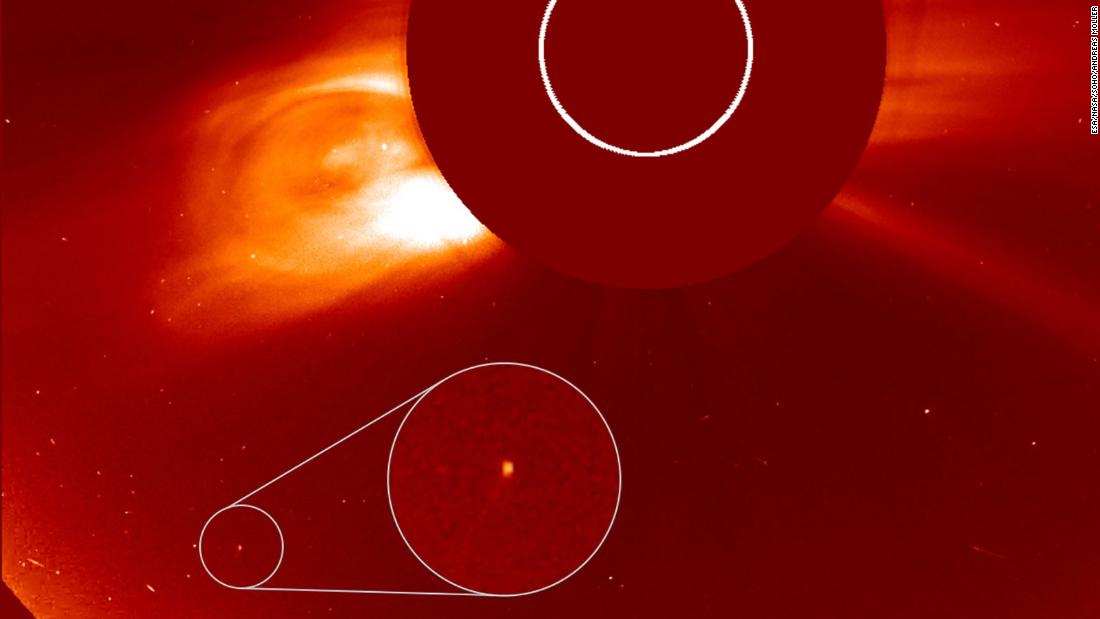
He was involved in the NASA-funded Sungrazer project, a citizen science project that invites anyone to look for new comets in images from the joint European Space Agency and NASA’s Solar and Heliosphere Observatory (SOHO).
The comet, called C / 2020 X3 (SOHO), is known as a Kreutz sungrazer, NASA said. This family of comets originated from a large parent comet that split into smaller fragments more than a thousand years ago. Today sungrazers continue to orbit the sun.
Boonplod knew the eclipse was approaching and was eager to see if his new discovery of comets could appear in the sun’s outer atmosphere.
A red satellite image of the sun shows some bright light orbiting the sun. Around the time the eclipse image was taken, the comet was traveling at about 450,000 miles per hour, about 2.7 million miles from the sun’s surface, NASA said.
The comet was about 15 meters in diameter, about the length of a semi-truck, NASA said. It then disintegrated into dust particles due to intense solar radiation, a few hours before reaching the point closest to the sun.
Kreutz sungrazer comets are most often found in SOHO images. The space observatory’s camera mimics total solar eclipses: a solid disk blocks blinding sunlight, revealing fainter features in its outer atmosphere and other celestial objects such as comets.
So far, 4,108 comets have been discovered in SOHO images, with the comet being the 3,524th Kreutz sungrazer detected, NASA said.
No comets known to have hit the solar surface or photosphere have ever been seen, the European Space Agency said.
Kreutz sungrazers reach approximately 31,000 miles (50,000 kilometers) from the surface, just passing through the lower regions of the solar atmosphere (the corona). Most usually evaporate in the hot solar atmosphere.